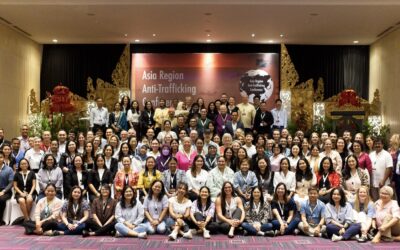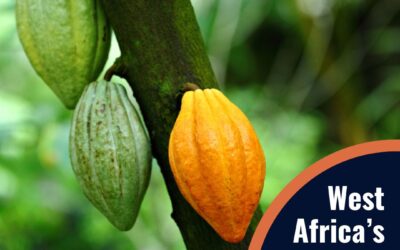The U.S. Agency for International Development (USAID) is working to integrate anti-trafficking efforts into America’s development projects around the globe. That’s because modern-day slavery can reduce the success of international development efforts.
USAID officials in Washington turned to FTS this week to learn if our programs to combat child slavery in Haiti and Ghana might provide examples of successful anti-slavery work that could be duplicated worldwide.
FTS Haiti Country Director Smith Maxime began the briefing for USAID staffers and others from the anti-slavery movement. The FTS Model Communities initiative in Haiti has educated impoverished rural families about what often happens to children who are sent away to cities to work as domestic servants. Parents are promised a better life for their kids if they are sent to live and work for another family, but many children end up as “restavek” slaves.
An estimated 27 percent of the trafficked children in Model Communities villages were retrieved by parents after the FTS education and mobilization project. Picture book discussion sessions helped parents realize what was happening to their children, and child protection committees were formed to rally parents around child rights.
“The purpose of this committee is to make sure the program is sustainable,” Smith explained, “because we are in the community for a period of time and then we have to leave.”
FTS Ghana Director Joha Braimah spoke next. The FTS Child Rights in Mining initiative employed techniques similar to those used in Haiti: illustrated booklets, community dialogue and child protection committees. Joha noted the strategy was “inward looking,” prompting participants to discuss “what the communities can do by themselves” to combat child slavery in gold mining regions rather than relying on outside intervention.
The Child Rights program prompted 71 percent of the participating parents to take action to protect their kids from harm.
FTS Director of Monitoring and Evaluation Sujata Bijou detailed for the group how FTS is trailblazing new techniques to gauge the successes of community-based anti-slavery efforts. It’s vital to demonstrate that projects are actually reducing the prevalence of slavery. She reviewed the rigorous methodology used to evaluate the Haiti and Ghana projects, and noted the challenges involved in conducting survey research in slavery hot spots.
“Trafficking is a complex issue,” she said, and so FTS is working to ensure that our monitoring and evaluation tools are both effective and efficient in asking “sensitive questions” about parents, children and slavery.
See the full report and mini-documentary on the FTS Model Communities project in Haiti here.
See the full report on the FTS Ghana Child Rights in Mining project here.
See the FTS Community Model for Fighting Slavery, and our monitoring and evaluation strategy to validate our model for change here.
See the USAID Counter-Trafficking in Persons policy here.



